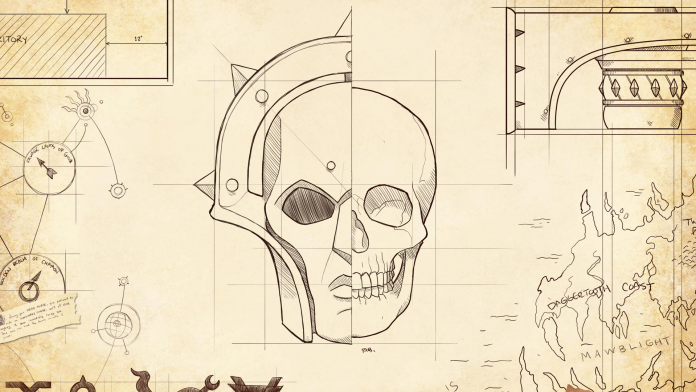Whether it’s pick up games at your local games club or games store or going to a tournament, matched play tends to be one of the most popular ways of playing Age of Sigmar. There are a lot of rules involved and the legalese can be a bit confusing if you’re not familiar with the game. We’re here to help.

What is Matched Play?
Age of Sigmar is broken down into a few game modes: Open, Narrative, and Matched. Each game mode offers players different missions to play and different ways of assembling an army. Each game mode uses points for units taken which can be found in the back of their respective battletome but are updated annually in the General’s Handbook, but more on that later.
Open keeps it….open. Players can take basically whatever they want, up to an agreed upon points limit. It doesn’t restrict the armies in any kind of way and has a few tables to generate the game from deployment zones, extra effects in game, and how you score points. Overall it’s a bit laissez faire and usually reserved for teaching new players some core concepts or just putting some models down. You won’t be playing it much.
Narrative focuses on building up a unique army with a system called Path to Glory. You assemble a general and units that complete quests across multiple games to gain glory and grow your stronghold and warband. Your army is limited in how many units can be reinforced and the number of different types of units you can take like Wizards and Priests. Upgrading your stronghold and taking territories increases the numbers you can take of each. Generally this is for making stories with friends or locals at the shop but plays very differently from Matched.
Matched Play is often seen as the baseline or go-to though as it offers a sense of immediate balance for pick up games with more strict requirements than matched play. For example you must have a required number of Battleline and Heroes, and you can’t take too many of certain units (like Behemoths). When arranging games in local communities or talking about army lists, it is going to be assumed you are familiar with these rules. There are 3 missions in the Core Rulebook that players can use but the annual General’s Handbook introduces further rules for matched play as well as 12 more missions. Tournaments and planned events use these rules most often, if not always.
It is always just best to talk to your opponent about what kind of game you want to play!
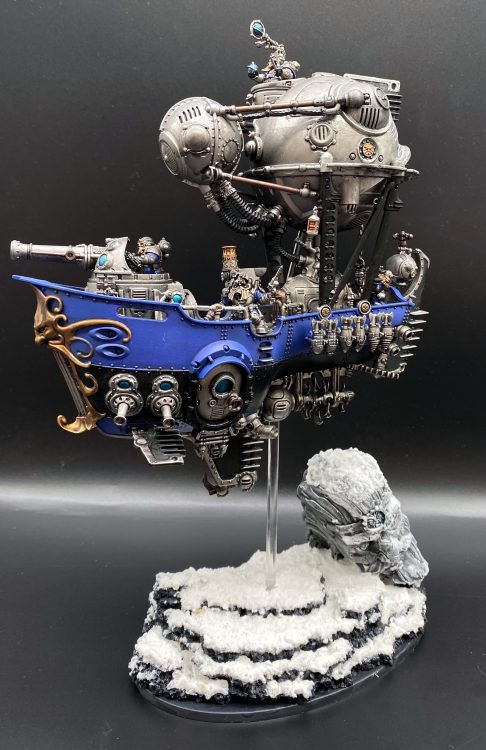
Setting Up Matched Play
The only book you really need to play Matched games is the most recent General’s Handbook (at time of writing that is the 2021 book). It’s best to look at the General’s Handbook as a sort of self contained packet. It contains all the information you need and when combined with the core rules, your battletome and any related material (Errata, Broken Realms, etc.) you get a picture of how a game is played. The General’s Handbook overrides anything in the core rules, so if you’re confused then the General’s Handbook takes precedent. Each General’s Handbook will be self contained so when the next one comes out, you can disregard any content from previous books.
Thankfully you can save yourself a lot of grief with just the General’s Handbook. It largely stands alone because it includes the Core Rules, updated points for all your units, and the current matched play missions and extra rules. Currently matched play games take place in Ghur, the realm of Beasts. It adds a few realm rules to each game which are good to keep in mind, but also worth noting that current speculation is that each year will introduce a new realm, which will override these.
Predator and Prey: Once each battle round you can score 1 Victory Point for killing an enemy Monster. This works well to help counter the amount of extra victory points a player can score by having monsters.
Seismic Shift: Beginning of the third battle round after rolling and determining who the first player is, the second player removes one objective from the table. This creates an interesting dynamic going into the second and third turn if you have choice of who goes first, it can be extremely tempting to go first (especially if it gives you a double turn) but can set you up to be in a bad spot for objectives and not score enough for the win by the end of the game. Some missions use Prime objectives, the mission will say so and on the deployment maps these are shown as stars instead of just circles like normal objectives.
Metamorphosis: A spell that all Wizards know in addition to any others they already know, cast on a friendly Hero within 12” on a 5+ and gives them the Monster keyword until your own next hero phase. Doing this makes scoring some Battle Tactics easier/possible as well as doing Monstrous Actions end of charge phase, however also means that if the Hero is killed then gives up a victory point like any other Monster would too!
Feral Roar: A command used at the start of the combat phase on any Monster, allowing it to count as having suffered 0 wounds for its damage table for the phase. This is great when you have a Monster that will benefit from it more than All Out Attack or if you want to use All Out Attack on another unit.
Getting your army ready for a game starts with your army list. There is a diagram in the General’s Handbook which shows the common point caps for list building. Just be aware that the game doesn’t seem to scale super well below 1500 points. While playing lower points is a good way to get used to rules and easier to build up an army it can be tough to hold down objectives and you’ll feel every loss much more significantly than at higher point games.
You must always take at least 1 Hero which is your General, if you take more than 1 Hero then you choose which of them is your General. You are then mandated to take a certain number of Battleline units (2 at 1k points and 3 at 2k point games). There are also caps on how many of certain units you can take (For example you are maxed at 6 heroes and 4 Behemoths) but unless you go out of your way you probably won’t bump up against these.
When putting together your list there’s some things you want to keep in mind and this will vary pretty heavily between each army but the basics are:
Does it Synergise? Armies have built-in buffs that work between units, often from Heroes. The best lists take a unit that starts “good” and rocket it to “great” by buffing them up.
Can it Take/Hold Objectives? You win games by scoring victory points, which is mostly done by having units on objectives to gain control and score – to take objectives from your opponent you need to have more models on it. Models with 5+ Wounds count as 2 models, which largely consists of Heroes but there are some high wound troop units that can count as 2 models each. Monsters count as 5 models, allowing them to overwhelm smaller troop units.
Will it Score Battle Tactics? More on these below.
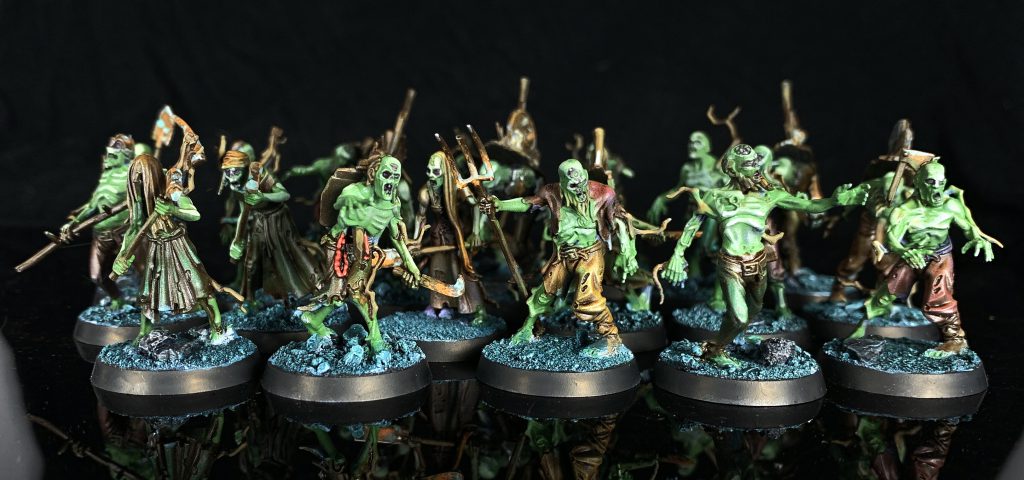
Missions and Scoring
There are 12 different battleplans to use in the General’s Handbook, and usually you will choose one at random. Tournaments and events will often select them beforehand, sometimes telling players which ones to expect in the event pack allowing the players to tailor their lists to score those battleplans better while others will make it a surprise.
Battleplans have between 3 and 6 objectives on the table and come with a map telling the players where the objectives are placed and each player’s territories (where armies are deployed). To score points you need to have units on those objectives, and if your opponent has models on the same one then you need to have more models than they do to hold it. Each model counts as 1 for holding it, which models of a wounds characteristic of 5+ counting as 2 instead and Monsters counting as 5. Some armies like Ogor Mawtribes and Sons of Behemat have additional rules for how many the units count as. Which player controls which objective is determined immediately after both armies are set up and then at the end of every turn by counting the number of models within 6” of the centre of the objective. You hold an objective until you lose control of it so you can move off of it after deployment and keep scoring it until your opponent moves a unit onto it, great for more elite armies it means you don’t need to keep expensive hard-hitting units on back-field objectives just so you can score points.
That doesn’t mean you’ll always want to abandon objectives. Some armies have ways of teleporting mid-game, like Seraphon Starborne, Kharadron Overlords, or Stormcast Eternals or have ways of bringing in units from reserve anywhere on the table or from a battlefield edge like Fyreslayers or Idoneth Deepkin. Units that can do this or just have a flat out high movement characteristic are a reason you’ll want to keep units back and holding objectives in your territory instead of just moving forwards.
If you’re unsure if your opponent’s army has any units like this then just ask! Even professional players will ask if they haven’t played against a certain army in a while so don’t be afraid of looking like an amateur. No one likes winning through a “gotcha” moment in a game. Equally, if your army does have units like this then be sure to make your opponent aware so they can make decisions based on all of the information and you can both play to the best of your ability, not because one person didn’t happen to know an obscure rule about a unit you took. This is just common courtesy but the rulebook does state you must be transparent about what your rules are if asked.
Most of the battleplans use a Hold One, Hold Two, Hold More method of scoring. In other words you will get 1 victory point for holding 1 objective, a second point for holding 2 (or more), and a third for holding more than your opponent currently holds.
This is crucial because if there are 3 objectives on the table you can score all 3 points just by holding 2 (As then your opponent only holds one – less than you). This means you don’t need to spread your forces quite so thin, an important skill to master. There are some missions that score differently though:
Marking Territory: With only 4 objectives evenly spaced out on the table, if a player controls all of the objectives from the end of turn 3 onwards then the game ends and they win immediately. This is probably the mission where Tectonic Interference is most important: since you can’t win before turn 3, you’re actually trying to secure 3 objectives, as by the time you can win one will be removed.
If this doesn’t happen by the end of turn 5 then the player that scored more battle tactics wins instead. Not a great battleplan really, armies that can move quickly or teleport mid-game have a leg up on armies that are slower and there’s not much of a game in between.
The Vice: Starting with 4 objectives in corners of the table, this is the only mission where the objectives move through the game. From turn 2 they shift to be in the middle of each quarter of the table and then in turn 4 they all converge to the centre of the table leaving just 1 objective to be scored. This still uses the Hold 1, Hold 2, Hold More but limits to only Hold 1 and Hold More for turns 4 and 5 since there’s only one objective.
Power in Numbers: Players only score the 6 objectives by destroying them, removing them from the table. From turn 2 onwards you can destroy any number of objectives you control and score a number of points depending on how long you held it, the longer it was held the more points you score. Destroying them early gives fewer victory points but denies your opponent being able to score those, whereas holding them longer scores you more but if the game swings means you can lose them and score nothing instead! Different armies will take a different approach to this. An added rule is that if there are any Battleline units on the objective then only Battleline units are counted for holding the objective making it a popular choice for events to run, giving incentive to taking Battleline units in your army beyond the minimum.
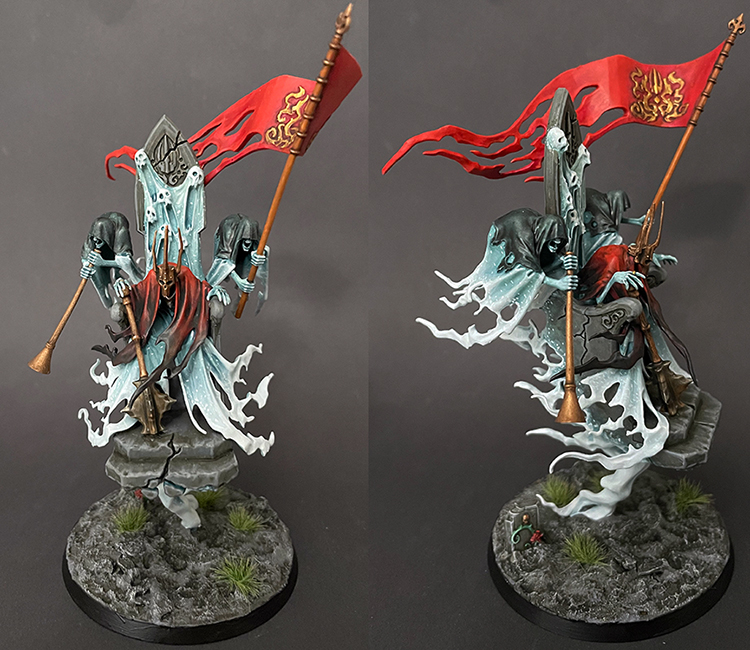
Battle Tactics
Objectives aren’t the only way you score points. At the start of each of your hero phase you pick a Battle Tactic to try and achieve by the end of your turn. Each one can only be chosen to attempt to achieve once, whether you score it or not, so you want to think ahead as well and not leave yourself with bad choices in the late game. Each Battle Tactic scores you 2 Victory Points but some award an additional point if you score it with one or more Monsters instead of 3 points. Ghur has a strong Monster theme, it’s likely these may change in future years. These are effectively secondary objectives from 40k but are chosen reactively, depending on what’s doable for you in that turn.
Ferocious Advance: Pick 3 of your units, run with those units, and have them all end within 3” of each other. Very straightforward and very easy to achieve but best done in the first turn because later on you’ll want to be shooting or charging, not just running around. If you score it with 3 Monsters then you get an extra point. Metamorphosis can be vital here.
Conquer: Pick an objective that your opponent controls and take it from them. Don’t overreach on this one, only take if you can very comfortably do it.
Slay the Warlord: A classic, kill the enemy General. The wording on it says the model that was chosen to be your enemy’s general, so not achievable on models that count as a General but weren’t chosen to be one in list building so make sure to verify with your opponent who the nominated General is. Take off the last wound with a Monster and get an extra point.
Broken Ranks: Pick an enemy Battleline unit and kill it. Some Battleline units are tougher than you might expect, so is best chosen on weak chaff units or units that are already nearly dead anyways. Once again, finish off the unit with a Monster and get an extra point.
Bring it Down: Pick an enemy Monster and kill it. If you kill the Monster with a Monster, get an extra point. Best chosen against enemy Monsters that have already been whittled down a bit.
Aggressive Expansion: Pick 2 objectives that are not wholly within your own territory and control them. Examine the battleplan closely, as some have objectives that are only half within your territory so these can be chosen for an early game easy battle tactic!
Monstrous Takeover: Pick a Monster in your army and have it on an objective you control end of turn. Even easier for faster Monsters with Fly since they can just make it onto a point quickly but if you have multiple Monsters in your army it’s pretty easy to score regardless. The only caveat is that there can’t be an enemy Monster on it as well, so either kill it or pick an objective with no enemy Monsters.
Savage Spearhead: Don’t even have to pick units for this, just have 2 or more of your units wholly within enemy territory. Armies that have ways of coming in from reserve, teleporting, or summoning can score this very easily but depending on the Battleplan territories can be half of the table as well!
Each of the 3rd edition Battletomes as well as Tome Celestials in some White Dwarf Magazines also offer further army-specific Battle Tactics but these are the ones available to every player.
Just keep in mind what you can score in the late game. If you’re only fielding one Monster then don’t leave Monstrous Takeover too long and don’t overreach either by choosing Slay the Warlord in your first turn unless you have an incredibly reliable way of doing so! Just remember whichever one you do choose except your opponent to act accordingly. If you choose Slay the Warlord or Bring it Down (and the Monster is also a Hero) then expect them to choose Finest Hour on that Hero for a better save as well as saving command points for All Out Defence to make them very hard to kill. If you have a choice between a sure bet and a risky option, go with the safe bet as much as you can because screwing up even one can set you back.
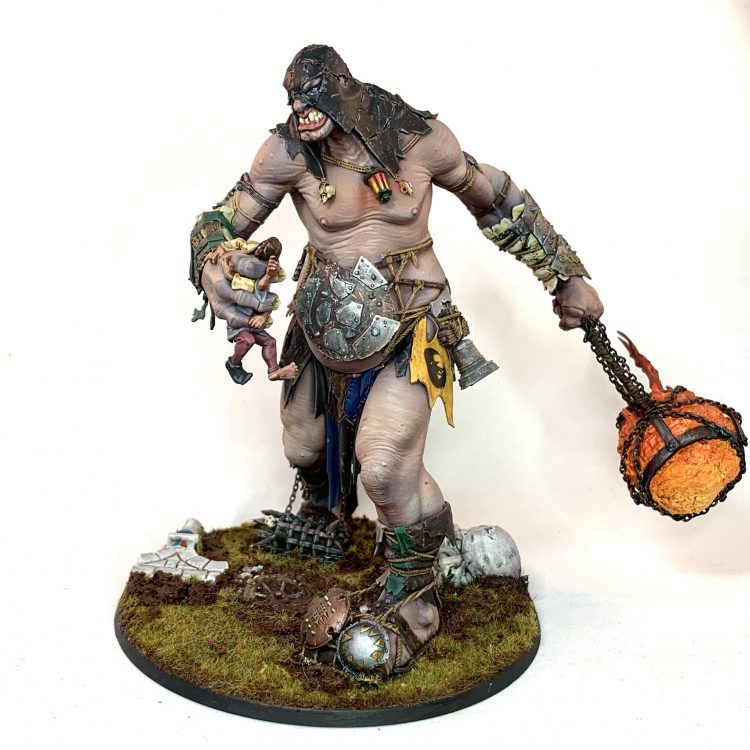
Grand Strategies
The last way to score victory points is through your Grand Strategy which you choose as part of list building. Some armies have very obvious Grand Strategies they want to choose, others however do not and can be tough to score. Generally speaking you want to pick a Grand Strategy that if you fail to score means you’ve likely just lost that game anyways. If you do score your Grand Strategy then it’s usually 3 Victory Points, sometimes used instead as a simple tie-breaker. The ones to choose from are:
Hold the Line: A very common pick for many armies – keep your Battleline alive. You just need to have 1 model from a Battleline unit alive at the end of the game to score. Popular for Fyreslayers, Ironjawz, and Stormcast who all have Battleline units that you want to take en masse anyways and are also hard to kill. Just note that armies that can summon or bring units back from the dead do not count; these new units do not count and only units on your army roster do.
Dominating Presence: Have more units from your starting army alive on the field than your opponent. If you’re taking numerous small units this could be a good pick, however that’s not often the case since armies generally want to minimise the number of units both for increased effectiveness of buffs as well as having less drops than your opponent.
Vendetta: Kill the enemy General while keeping yours alive. May seem easy for some armies like Kharadrons or Lumineth with the ranger potential however keeping your own General alive is usually easier said than done.
Prized Sorcery: Keep at least one of your Wizards alive by the end of the game. A good pick for Tzeentch and Lumineth armies since practically your entire army is made of them.
Pillars of Belief: Similar to the one above, except for Priests. The only armies which really want multiple Priests around are Khorne, Fyreslayers and, at a push, Stormcast Eternals. Usually these armies will go for Hold the Lines since keeping some foot-heroes alive isn’t so easy to do and your opponent will gun for them if they know it can trip you up.
Beast Master: Keep at least one Monster from your starting army alive. Again, can’t be ones summoned in (sorry Beasts of Chaos) but a great and common choice for armies like Ogors that focus on the Beastclaw side of the army and Sons of Behemet who’s whole army is Monsters.
Predator’s Domain: A bit of an odd one, at the end of the game if you control more terrain features than your opponent. You control a terrain feature if you have more models on or within 1” of a terrain feature than your opponent. For highly mobile armies to be able to dart to terrain features at the end of game it might be a solid pick, but doing so might also take you off objectives and keep you from scoring.
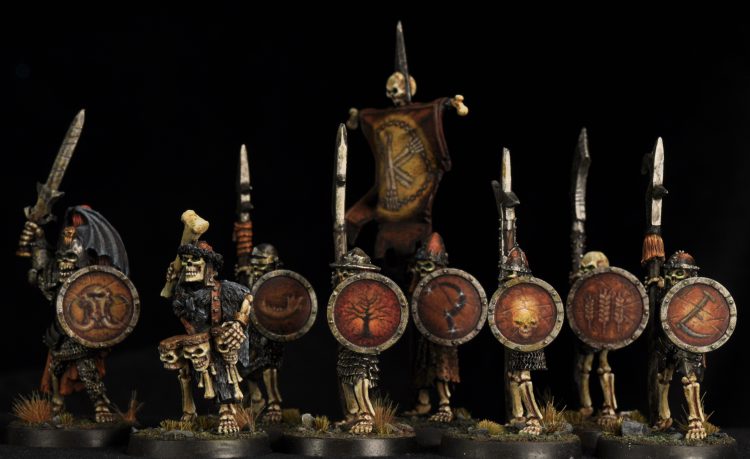
Pulling it Together
There’s definitely quite a few things to keep in mind but setting yourself reminders or going in with a plan will help out a lot, especially if you’re newer to the game. When putting together your army list, think about which Grand Strategy you want to aim for and make sure you can reasonably score it.
Have any questions or feedback? Drop us a note in the comments below or email us at contact@goonhammer.com.
